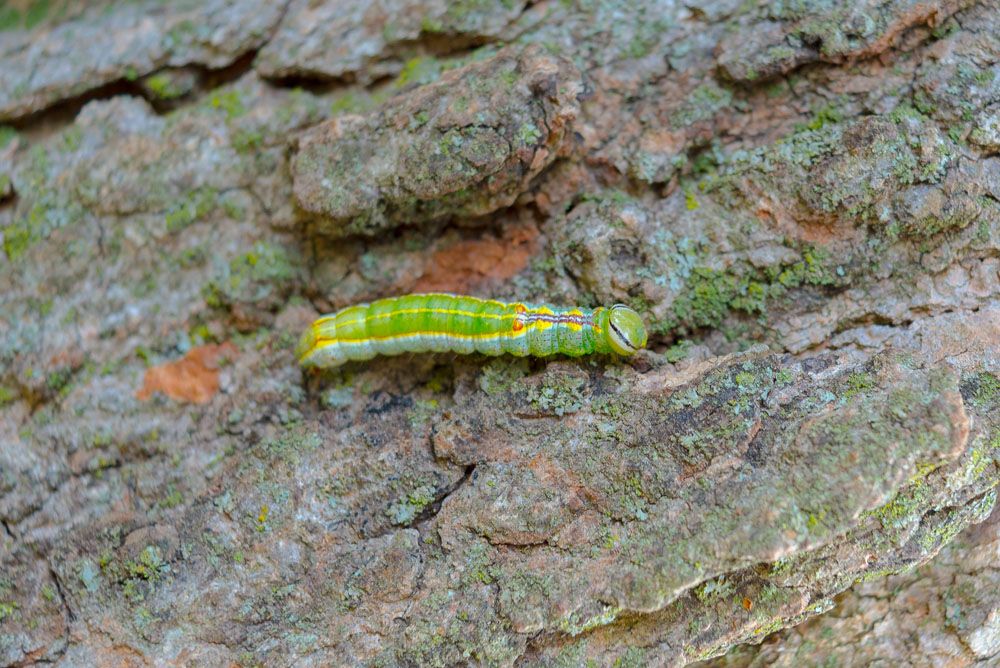
Variable Oakleaf Caterpillar – Heterocampa manteo
Variable Oakleaf Caterpillar – Heterocampa Manteo
Scientific Name: Heterocampa Manteo
Common Name: Variable Oakleaf Caterpillar
Distribution: North America
Host plants: Although all oak species are targeted, white oaks are the most favored. American walnut, boxelder, persimmon, apple, American elm, American beech, and American basswood are some of the other hosts.
Identification: This species’ fully grown larvae are around 1-1/2 inches long and have small hairs scattered throughout. As eating continues, a single larva may change color. The color of the head changes, going from green to yellow to amber brown. Each side of the cranium is adorned with two laterals, curving bands. The entire body might be yellow or pure green in hue.
On the back, a wide stripe that varies greatly in size and form is frequently observed. This stripe ranges in hue from pale pink to deep crimson. The pupa is robust, approximately ½ of an inch long, glossy, and dark reddish brown. At the back tip, it contains two tiny spines. The moth’s wingspan measures between 1-1/2 and 1-3/4 inches. Each forewing has one little black spot, three darker, wavy, and diffused lines, and can be either pale or dark ashy gray in color. There’s light brown on the hindwings.
Life Cycle: In the North there is one generation, whereas in the South there are two. The larvae in the South pupate in the soil after feeding from early May to late June. Larvae of the second-generation feed from mid-August to late September, after which they descend to the ground to make cocoons and hibernate. By early April, adult moths emerge from their cocoons.
Damage: While adult larvae swallow the whole leaf, excluding the leaf stalks and principal veins, younger larvae skeletonize the leaf. There are two defoliation periods: from mid-August to late-September, and from early May to late-June.
Management: Eggs, larvae, and pupae are destroyed by insect parasites and predators. Another factor that inhibits most infestations is winter mortality. High-value trees may occasionally require chemical management.
